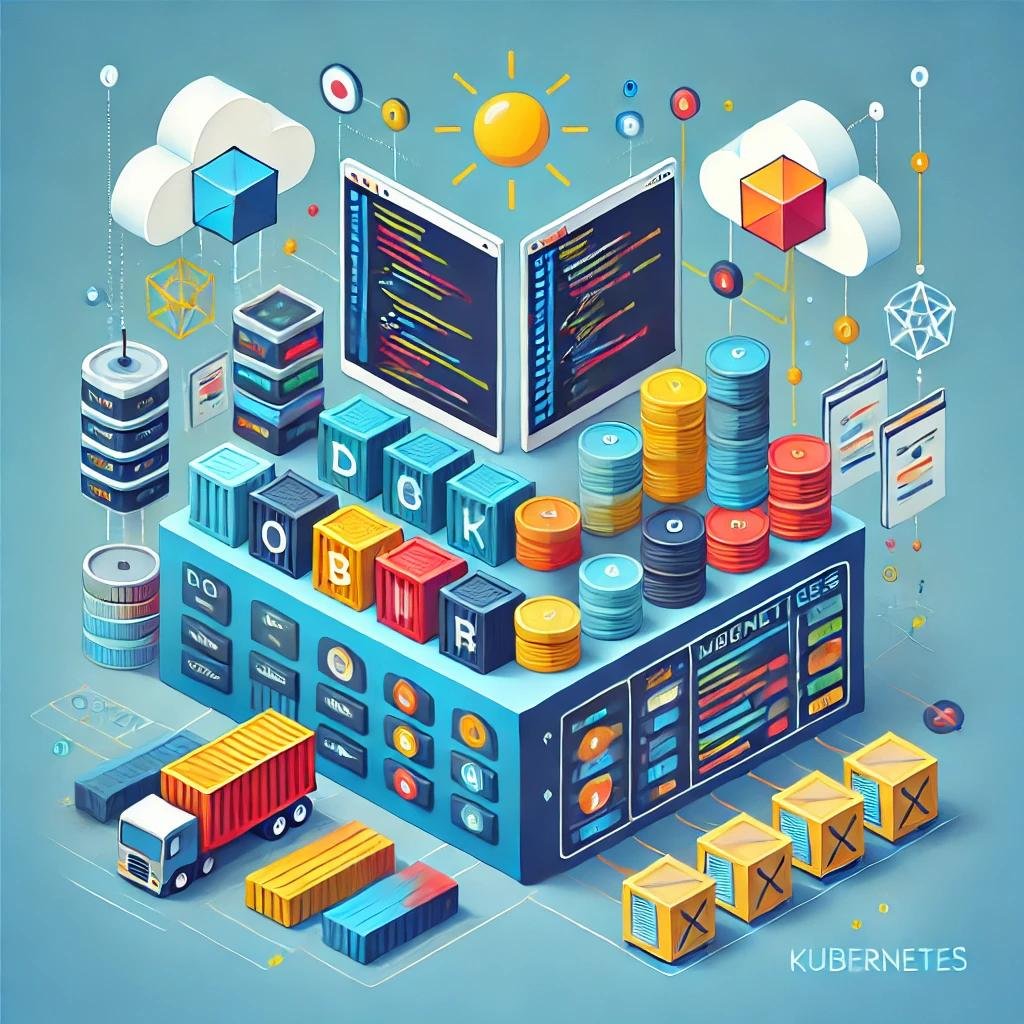
Understanding Docker and Its Relationship with Kubernetes
Understanding Docker and Its Relationship with Kubernetes
In today’s tech-driven world, the buzzwords “Docker” and “Kubernetes” have become synonymous with modern application development and deployment. If you're curious about what these terms mean and how they work together, this blog will break it down in simple terms with relatable examples.
What is Docker?
Docker is like a magical lunchbox for your applications. Imagine you’re preparing lunch for work. You need your sandwich, salad, and drink to stay fresh and organized until lunchtime. Docker does something similar for software. It packs up your application and everything it needs to run (like code, libraries, and dependencies) into a "container."
A container ensures your app works consistently, no matter where you run it. Whether on your laptop, a server in the office, or a cloud platform, the container keeps the app self-contained and functional.
Example:
Suppose you're a chef creating a recipe that relies on specific ingredients and tools. If someone else wants to replicate your recipe, you’d give them a pre-packed kit containing all the necessary items—exactly like how Docker provides containers for developers to run applications seamlessly.
What is Kubernetes?
Now, imagine you’re not just packing one lunchbox but hundreds of them, and you need to deliver them to various locations efficiently. This is where Kubernetes comes in.
Kubernetes is an open-source system designed to manage and orchestrate multiple containers. While Docker is great at creating containers, Kubernetes excels at ensuring they’re deployed, scaled, and running smoothly across a cluster of computers.
Kubernetes handles tasks like:
- Automatically restarting a container if it crashes.
- Scaling the number of containers up or down based on demand.
- Distributing containers across servers for optimal performance.
- Rolling out updates without downtime.
Example:
Let’s revisit the lunchbox analogy. If Docker is about packing individual lunchboxes, Kubernetes is like a logistics manager who ensures every lunchbox gets to the right location, replaces spoiled food, and prepares extra boxes if there’s sudden demand.
How Do Docker and Kubernetes Work Together?
Docker and Kubernetes are a dream team in the world of containerized applications. Docker takes care of creating containers, while Kubernetes manages them at scale. Here’s how they complement each other:
- Docker: Builds, ships, and runs individual containers.
- Kubernetes: Orchestrates and manages these containers across a cluster of machines.
Real-World Example:
Let’s say you’re running an online food delivery app. The app has several components:
- A front-end interface for users.
- A back-end server handling requests.
- A database storing user orders.
You can use Docker to containerize each component. Now, imagine your app becomes wildly popular during lunch hours. Kubernetes ensures your containers scale up to handle the increased traffic and scales back down during quieter times, optimizing resources and reducing costs.
Key Benefits of Using Docker with Kubernetes
- Consistency: Containers ensure the app runs the same way across all environments.
- Scalability: Kubernetes makes scaling seamless based on demand.
- High Availability: Kubernetes keeps the app running smoothly by managing restarts and load balancing.
- Ease of Updates: Roll out updates to your app without downtime.
A Simple Analogy to Remember
- Docker is like a single lunchbox—portable, self-contained, and ready-to-go.
- Kubernetes is the delivery system that manages thousands of lunchboxes, ensuring everyone gets fed efficiently.
Getting Started
If you're new to these tools, start by:
- Installing Docker and learning to create and run a container.
- Exploring Kubernetes basics through platforms like Minikube or Kubernetes Playground.
- Experimenting with deploying a simple containerized app on a Kubernetes cluster.
By combining Docker’s containerization with Kubernetes’ orchestration, you’ll unlock the power to build scalable, resilient, and efficient applications—a must-have for modern software development.

0 Comments